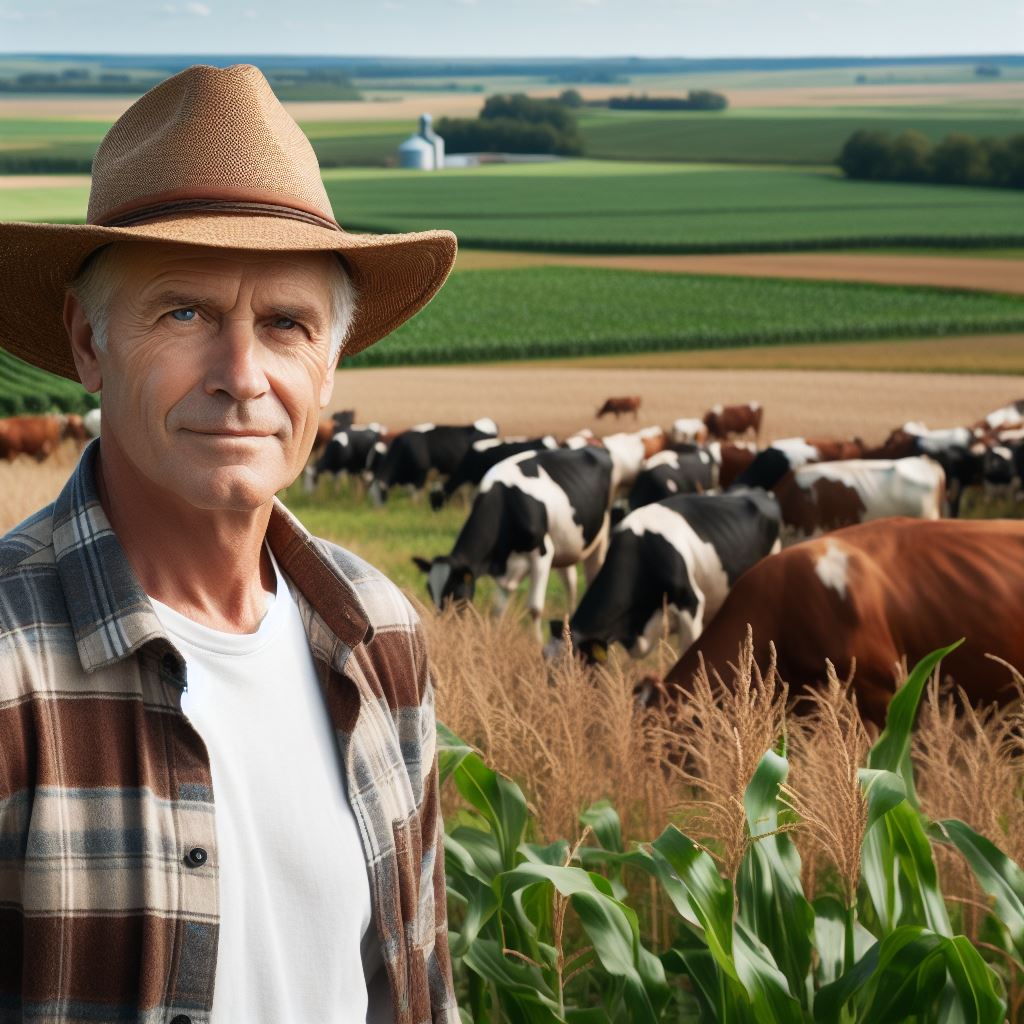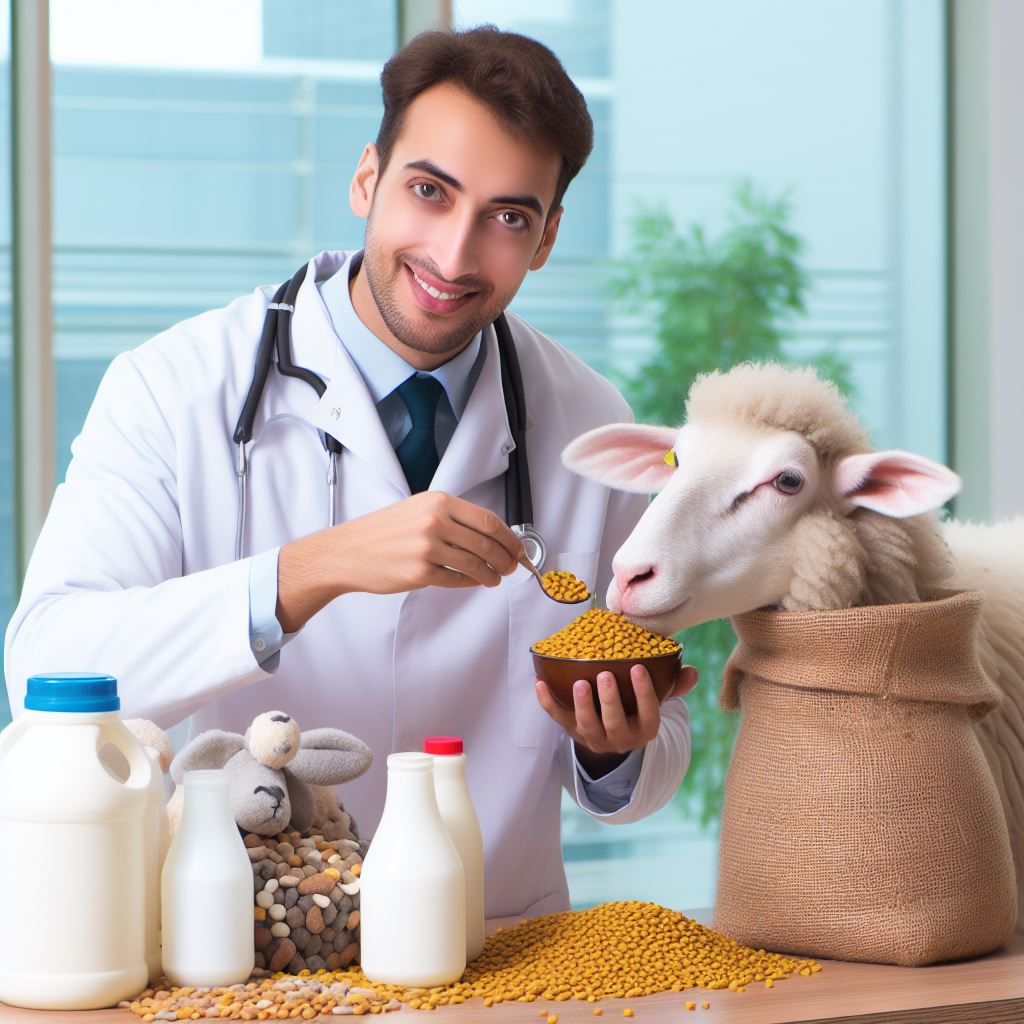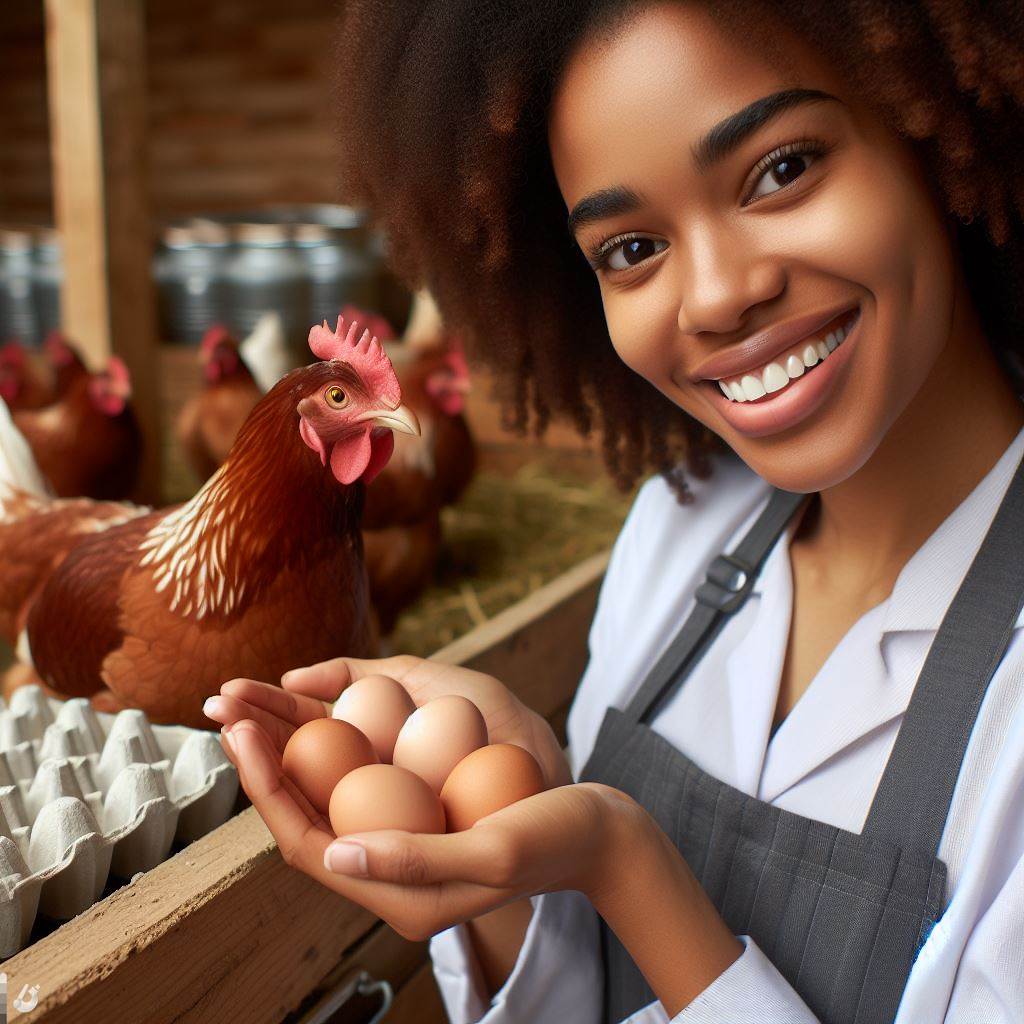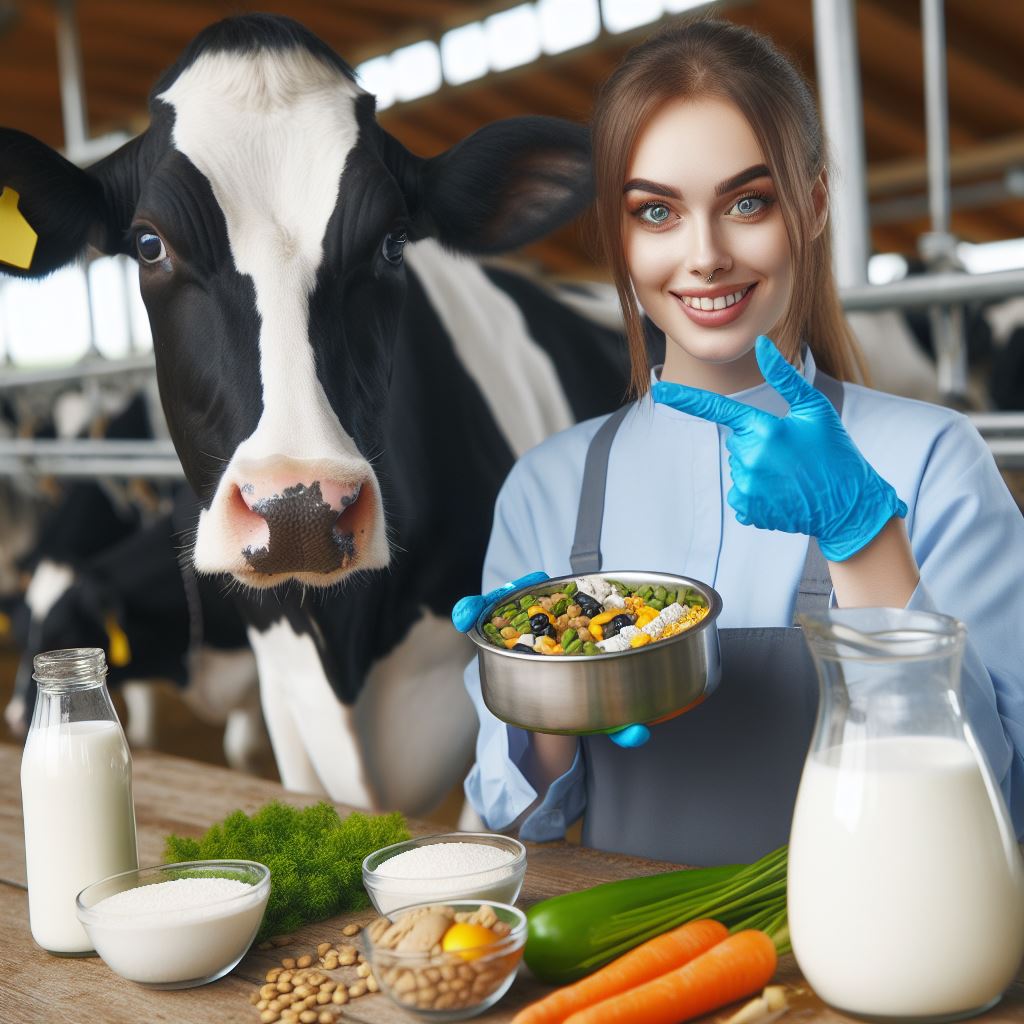Introduction
Technology has become increasingly important in modern cattle farming, revolutionizing the way the industry operates.
With the advancements in technology, farmers can now optimize their operations and improve the overall productivity and profitability of their farms.
In the past, cattle farming was largely reliant on traditional methods that required immense physical labor and time-consuming practices.
However, with the introduction of technology, farmers can now automate many tasks, saving time and effort.
For example, the use of automatic milking machines not only reduces labor costs but also ensures a more efficient and consistent milking process.
Moreover, technology has enabled the monitoring and tracking of individual animals, allowing farmers to keep a close eye on their health and well-being.
Sensors and wearable devices can detect changes in temperature, heart rate, and even detect signs of illness.
This valuable data allows farmers to intervene quickly and provide appropriate care, ultimately leading to healthier and more productive livestock.
Technology has also revolutionized feeding methods in cattle farming.
Automated feeding systems can precisely distribute the right amount of feed to individual animals based on their nutritional needs.
This not only prevents overfeeding but also reduces feed wastage, resulting in significant cost savings.
Furthermore, technology has improved the efficiency of reproduction in cattle farming.
Artificial insemination techniques, embryo transfer, and genetic selection methods have led to more efficient breeding practices and improved genetic traits in livestock.
Overall, the importance of technology in modern cattle farming cannot be overstated.
It has revolutionized the industry by increasing productivity, improving animal health, and optimizing resource utilization.
Transform Your Agribusiness
Unlock your farm's potential with expert advice tailored to your needs. Get actionable steps that drive real results.
Get StartedAs technology continues to evolve, the future of cattle farming looks promising, with even more advancements expected for the benefit of farmers and consumers alike.
Health Monitoring
In modern cattle farming, health monitoring plays a crucial role in ensuring the overall well-being of the cattle.
With the advancement of technology, wearable devices have emerged as effective tools for monitoring cattle health.
The use of wearable devices for monitoring cattle health
These wearable devices, such as smart collars and ear tags, are equipped with various sensors that collect real-time data about the cattle’s vital signs, behavior, and activity levels.
The data is then transmitted to a central system for analysis and monitoring.
The use of wearable devices for health monitoring in cattle farming has numerous advantages.
Apart from early disease detection, it enables farmers to make informed decisions regarding nutrition, reproduction, and animal management.
It also reduces the need for manual health checks, saving time and effort.
The benefits of real-time monitoring and early disease detection
One of the key benefits of real-time health monitoring is early disease detection.
By constantly monitoring the cattle’s health parameters, any deviation from the normal range can be detected promptly.
This allows farmers to take immediate action to prevent the spread of diseases and provide timely treatment.
Real-time monitoring also helps in identifying potential health issues before they become severe.
For example, if a cow’s activity level decreases significantly, it may indicate an underlying health problem.
Timely detection of such changes can help in preventing costly treatments and losses.
Examples of popular health monitoring tools used in cattle farming
- Several popular health monitoring tools are commonly used in cattle farming.
- One such tool is the CowScout system, which uses a neck collar equipped with sensors to monitor the cow’s activity, rumination, and resting behaviors.
- It provides real-time data and alerts farmers when there are any abnormalities.
- Another widely used technology is the eartag-based health monitoring system.
- These eartags are embedded with sensors that continuously monitor the cow’s body temperature, heart rate, and respiratory rate.
- The data is wirelessly transmitted to a centralized database where it can be accessed by farmers through mobile or web applications.
- Additionally, there are smart boluses available in the market that are used for monitoring rumen pH, temperature, and motility.
- These boluses are orally administered to the cattle and remain inside their rumen, continuously providing data about the digestive health.
In essence, the adoption of wearable devices for health monitoring has revolutionized the cattle farming industry.
Real-time monitoring and early disease detection have become essential tools for ensuring the well-being and productivity of the cattle.
With advancements in technology, the possibilities for improving cattle health through monitoring are endless.
Read: Duck Nutrition Guide: Feeding for Healthy Flocks
Automation in Modern Cattle Farming
In the modern era of agriculture, technology has revolutionized various aspects of cattle farming.
One crucial area where automation has played a significant role is in feeding systems and waterers.
By utilizing automated solutions, farmers have experienced improved efficiency and reduced labor costs.
Discussing the use of automated feeding systems and waterers
Automated Feeding Systems
Automated feeding systems have become increasingly popular in modern cattle farming.
These systems ensure a consistent and precise distribution of feed, enhancing the overall well-being and productivity of the livestock.
One example of an automated feeding system is the use of robotic feeders.
Showcase Your Farming Business
Publish your professional farming services profile on our blog for a one-time fee of $200 and reach a dedicated audience of farmers and agribusiness owners.
Publish Your ProfileThese feeders are programmed to distribute the exact amount of feed to each animal, based on their nutritional requirements.
This not only ensures that each animal receives the necessary nutrients but also prevents overfeeding or underfeeding.
Furthermore, automated feeding systems allow farmers to monitor and control the feeding process remotely.
By using sensors and data analytics, farmers can easily keep track of feed levels, consumption patterns, and adjust the feeding program accordingly.
This level of control and precision ensures optimal nutrition, leading to healthier and more productive cattle.
Automated Waterers
In addition to automated feeding systems, automated waterers have also become instrumental in modern cattle farming.
These waterers provide a constant and clean water supply to the livestock, ensuring their hydration needs are met at all times.
One commonly used automated waterer is the float valve system.
This system uses a ball float to maintain a consistent water level in the trough.
When the water level drops, the valve opens, allowing fresh water to flow in and replenish the supply.
This ensures that the cattle always have access to clean water without manual intervention.
Automated waterers also come equipped with features such as temperature control and filtration systems.
These additional functionalities ensure that the water remains at a suitable temperature and free from impurities, promoting the health and well-being of the cattle.
Improved Efficiency and Labor Cost Reduction
- The implementation of automation technology in feeding systems and waterers has resulted in improved efficiency and reduced labor costs for cattle farmers.
- Automated feeding systems eliminate the need for manual feeding, saving farmers valuable time and effort.
- Farmers can allocate their resources to other essential tasks, such as monitoring the health and welfare of the animals or focusing on farm management strategies.
- Additionally, automated systems provide real-time data and alerts.
- This allows farmers to anticipate and address any feeding or watering issues promptly.
- By proactively resolving problems, farmers can prevent potential disruptions in the cattle’s growth and development, further increasing operational efficiency.
- Moreover, automated systems streamline the feeding and watering process, ensuring equality and consistency across the herd.
- Every animal receives the appropriate amount of feed and water, eliminating any discrepancies that manual methods may have caused.
In summary, automation has revolutionized cattle farming by introducing advanced and sophisticated systems in feeding and watering practices.
The use of automated feeding systems and waterers ensures optimal nutrition, improved efficiency, and reduced labor costs.
By embracing automation technology, cattle farmers can enhance the overall productivity and well-being of their livestock, driving the industry towards a more sustainable and prosperous future.
Read: Alpaca Feed Tips: Nutrition for Fleece Quality
Data Analytics
Modern cattle farming has benefited greatly from the use of data analytics, as it plays a crucial role in the management and decision-making processes.
The collection and analysis of data provide valuable insights and help farmers make informed decisions to enhance productivity and efficiency.
Discussing the importance of data collection and analysis in modern cattle farming
Data analytics in cattle farming enable farmers to monitor various aspects of their operations, including animal health, nutrition, reproduction, and overall management.
By collecting data on these factors, farmers can identify patterns, trends, and potential issues within their herds.
Additionally, data analytics can provide insights into the effectiveness of different management practices.
By analyzing data on feeding regimes, housing conditions, and environmental factors, farmers can optimize their protocols to improve the overall welfare and productivity of their herds.
Explanation of how data analytics helps in making informed decisions
One of the most significant advantages of data analytics is its ability to aid in making informed decisions.
By analyzing historical data and current trends, farmers can predict and anticipate future outcomes.
For example, data analytics can help determine the optimal time for breeding to maximize the chances of successful reproduction.
Moreover, data analytics can assist in identifying health issues before they become severe.
By monitoring parameters such as body temperature, weight change, and feeding patterns, farmers can quickly detect any deviations and take appropriate action to prevent the spread of diseases or infections among their cattle.
Examples of data analytics tools used in the industry
- Data analytics tools have become an essential part of modern cattle farming.
- One such tool is wearable sensors and GPS trackers, which allow farmers to collect real-time data on the location, movement, and behavior of their cattle.
- These sensors provide valuable information on the animals’ daily routines and help farmers optimize grazing patterns and manage their herds more efficiently.
- Another data analytics tool commonly used in the industry is the Electronic Identification (EID) system.
- This system assigns a unique identification number to each animal, facilitating accurate data collection on their weight, growth rate, and health records.
- This data is then analyzed to ensure proper nutrition and growth, leading to healthier and more productive cattle.
- Furthermore, drones equipped with infrared cameras have emerged as a valuable tool for data collection in cattle farming.
- These drones can capture thermal images of the animals, helping identify any abnormal heat patterns that may indicate health issues like inflammation or infections.
- Such early detection can save farmers time, money, and the health of their cattle.
In a nutshell, data analytics has revolutionized modern cattle farming by providing farmers with valuable insights and aiding in informed decision-making.
The importance of data collection and analysis in cattle farming cannot be overstated, as it helps monitor and manage various aspects of the operations, detect health issues, and optimize productivity.
With the advancements in data analytics tools, farmers can more effectively manage their herds, resulting in healthier and more productive cattle.
Read: Nutritional Needs of Turkeys: A Complete Guide

Genetic Testing
Discussing the use of genetic testing for cattle breeding and selection
In modern cattle farming, genetic testing plays a crucial role in cattle breeding and selection.
Genetic testing is a technique that involves analyzing an animal’s DNA to assess its genetic makeup, potential health risks, and various other traits.
Explanation of how genetic testing improves the quality of the herd
By utilizing genetic testing in cattle breeding, farmers can make informed decisions to improve the quality of their herds.
One significant benefit of genetic testing is the ability to identify animals with desirable traits.
For example, if a farmer desires to produce cattle with higher milk production, they can use genetic testing to select animals with genes associated with increased milk production.
Genetic testing also helps farmers reduce the risk of inherited diseases within their herds.
By identifying carriers of genetic disorders, farmers can make informed breeding decisions to avoid passing on these diseases to future generations.
Furthermore, genetic testing allows farmers to better understand the genetic potential of each individual animal.
Showcase Your Farming Business
Publish your professional farming services profile on our blog for a one-time fee of $200 and reach a dedicated audience of farmers and agribusiness owners.
Publish Your ProfileThey can assess traits such as growth rate, meat quality, and resistance to certain diseases, aiding in the selection of animals that will contribute to the overall improvement of the herd.
Various technologies are used in genetic testing for cattle farming
- One such technology is PCR (polymerase chain reaction), which amplifies specific DNA sequences for analysis.
- PCR is commonly used to identify specific genes, mutations, or markers associated with desired traits or diseases.
- Next-generation sequencing is another genetic testing technology that allows for the analysis of the entire DNA sequence of an animal.
- This technology provides a more comprehensive understanding of an animal’s genetic composition, facilitating more accurate breeding decisions.
- Genomic selection is a technique that combines genetic testing with statistical models to predict an animal’s genetic potential.
- By evaluating numerous genetic markers, farmers can estimate an animal’s breeding value for various traits, enabling them to make more precise breeding choices to improve the quality of the herd.
Therefore, genetic testing is a valuable tool in modern cattle farming for breeding and selection purposes.
By using genetic testing technologies such as PCR, next-generation sequencing, and genomic selection, farmers can make informed decisions that improve the overall quality of their herds.
Genetic testing enables the identification of animals with desirable traits, reduces the risk of inherited diseases, and provides a better understanding of an animal’s genetic potential.
Ultimately, genetic testing empowers farmers to enhance their cattle farming practices and achieve improved outcomes.
Read: Llama Feeding Basics: Health & Nutrition Tips
See Related Content: Beef Cattle Genetics: Traits for Better Beef
Virtual Fencing
Discussing the concept of virtual fencing and its benefits in cattle farming
The concept of virtual fencing has revolutionized cattle farming, offering countless benefits for farmers and their livestock.
This innovative technology eliminates the need for physical barriers, making it easier to manage and protect herds.
Explanation of how virtual fencing reduces the need for physical barriers
One of the main advantages of virtual fencing is its ability to reduce labour and costs associated with traditional fencing methods.
Instead of erecting and maintaining physical fences, farmers can now rely on advanced technologies to keep their cattle confined within specified areas.
Virtual fencing operates on the principle of using GPS technology and electronic collars to keep animals within predefined boundaries.
These boundaries can be easily adjusted and customized according to the specific needs of the farm and the herd.
The use of virtual fencing promotes better grazing practices as it allows controlled access to different sections of pasture.
This prevents overgrazing and helps maintain healthier grassland, ensuring a more sustainable and efficient use of resources.
Aside from confinement, virtual fencing can be used to guide cattle movement within a specific area.
By creating virtual paths or corridors, farmers can direct their livestock towards desired locations, such as water sources or supplementary feeding areas.
There are even virtual fencing options that allow farmers to track and monitor their cattle remotely.
This enhances overall herd management and enables early detection of any irregularities, such as health issues or potential escapes.
Examples of virtual fencing technologies used in the industry
- One of the most commonly used technologies in virtual fencing systems is the GPS-enabled collar.
- These collars are equipped with sensors that detect when an animal approaches the virtual boundary.
- If the animal crosses the boundary, the collar emits a mild electric shock to deter further movement.
- Another type of virtual fencing technology is based on wireless communication between a central control unit and wearable devices on the animals.
- This system uses radio frequency signals to establish invisible boundaries and deliver auditory or vibrational cues to cattle.
- Virtual fencing technology also enables the implementation of exclusion zones within the farm.
- These zones can be established around sensitive areas to prevent the entry of livestock without the need for physical barriers.
Furthermore, virtual fencing systems can be integrated with other technologies, such as automated feeding systems or robotic milking machines, to create a more efficient and streamlined farming operation.
Basically, virtual fencing has proven to be a game-changer in modern cattle farming. Its benefits include reducing labour and costs, promoting better grazing practices, and facilitating remote herd management.
With various technologies available, farmers have the flexibility to choose the most suitable virtual fencing system for their specific needs.
Conclusion
The use of top tech in modern cattle farming is crucial and brings numerous benefits.
It allows farmers to monitor their cattle health and behavior more effectively, resulting in improved overall herd management.
The continuous advancements in technology for the industry mean that there will be even more innovative tools and solutions available in the future.
By embracing new technologies, farmers can increase efficiency, reduce costs, and optimize their operations.
Implementing high-tech solutions like automated feeding and milking systems can also improve animal welfare and reduce stress on the cattle.
Furthermore, the use of sensors and data analytics can help prevent diseases, detect anomalies, and improve breeding programs.
It is important for farmers to stay informed about the latest tech developments and not hesitate to adopt them.
By doing so, they can stay competitive, remain sustainable, and contribute to the overall advancement of the cattle farming industry.
Embracing new technologies is key to achieving improved efficiency, productivity, and profitability in cattle farming.
So let’s embrace the power of technology and take modern cattle farming to new heights!




